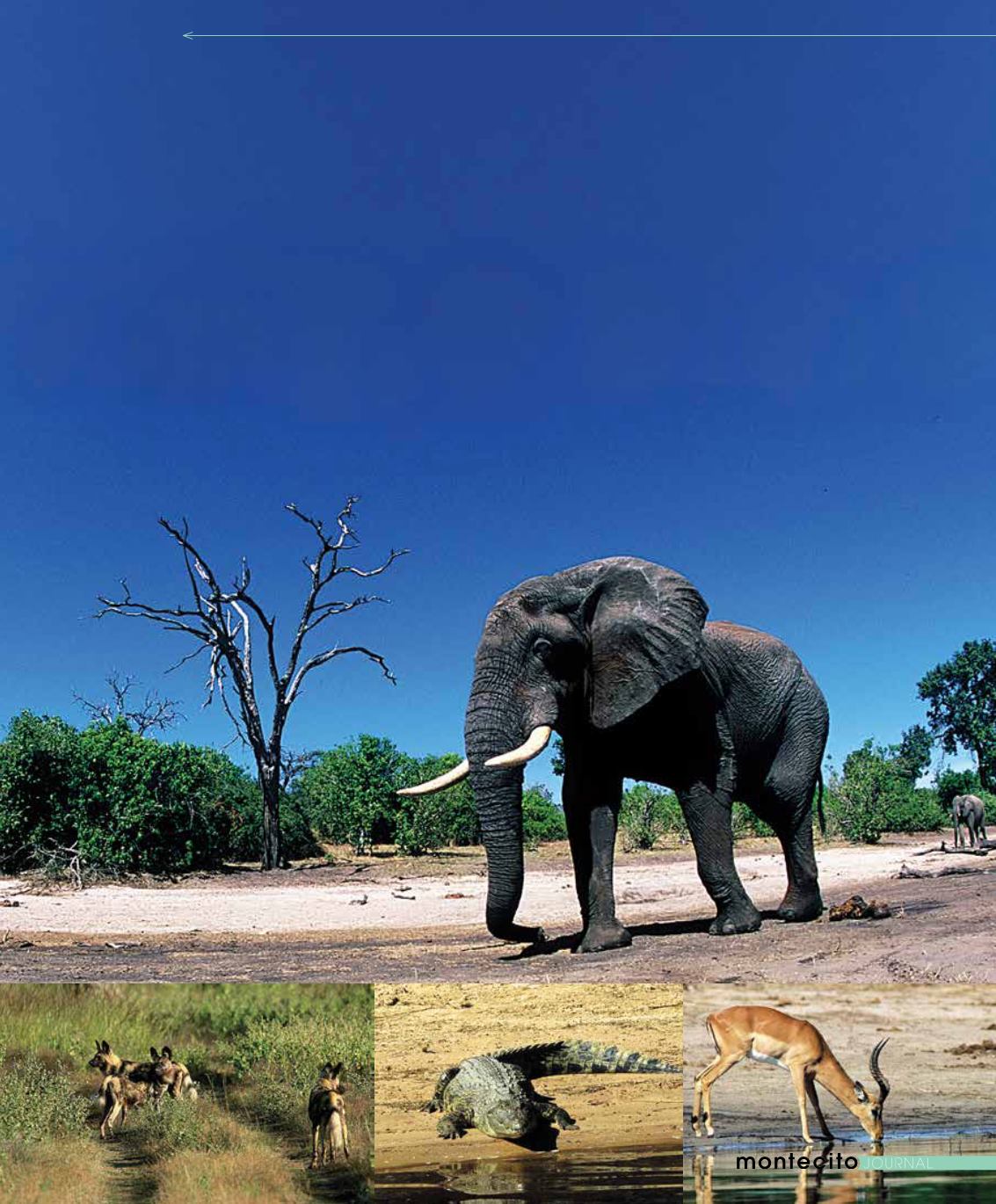
elephant for its ivory, the black-and-white rhino for its horns and other
wildlife for the bush meat trade. Since Zimbabwe’s plummet into
economic ruin, poaching has come to the forefront not only for economic
reasons, but because people are starving.
The tool of choice for poachers is the wire snare. Many animals
get trapped in them, even though it was intended for another species.
Conservationists and anti-poaching patrols go on regular sweeps ridding
the bush of wire snares while hunting down poachers.
Arguably the most notable and misunderstood species caught
in the insidious snares is the critically endangered African painted
dog. Education seems to be the best way to combat the problem,
especially with young Zimbabweans. Painted Dog Conservation
Society located on the outskirts of Hwange has received financial aid
from international supporters, creating a large interpretive area for
foreign visitors and continued education. It’s also a rehabilitation
facility for injured and orphaned painted dogs, one of Africa’s most
misunderstood predators. All the enclosures for rehabilitated dogs are
made from confiscated poachers’ snares, as are bracelets and snare
wire animal sculptures. Proceeds from the sales benefit the artisans,
raise awareness and funds to further support anti-poaching efforts in
Zimbabwe. For more information, go to
.
SELF-SUSTAINED
E
phraim killed the engine 20 yards from shore, the small boat
gliding up to the brilliant red earth that surrounds Lake Kariba.
Immediately, inquisitive, wide-eyed children huddled around our boat,
their smiles and big brown eyes affixed on our every movement.
As we stepped ashore, the children jockeyed for position on who
was going to hold our hands while we visited the fishing village of the
FAR
FLUNG
TRAVEL
86
winter
|
spring


